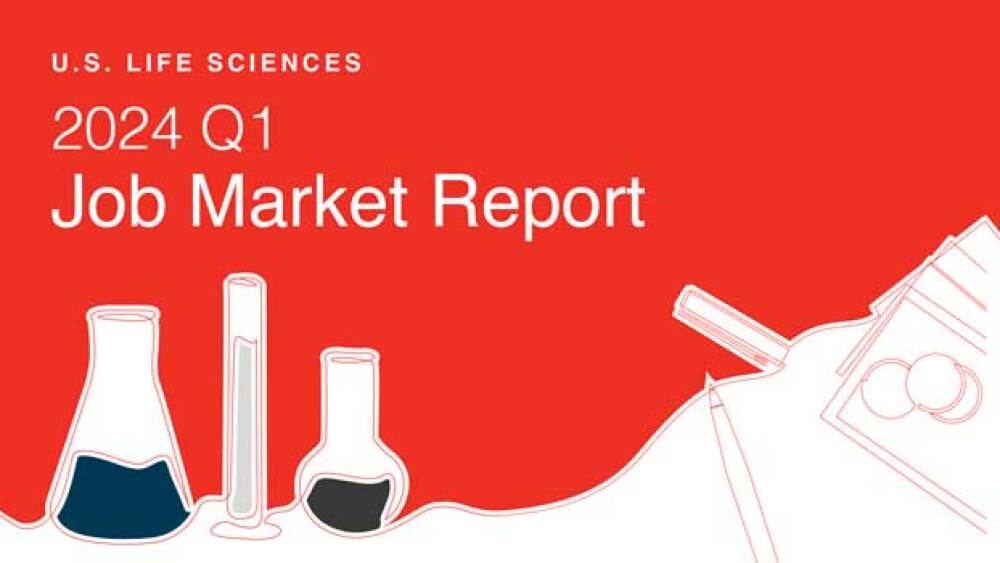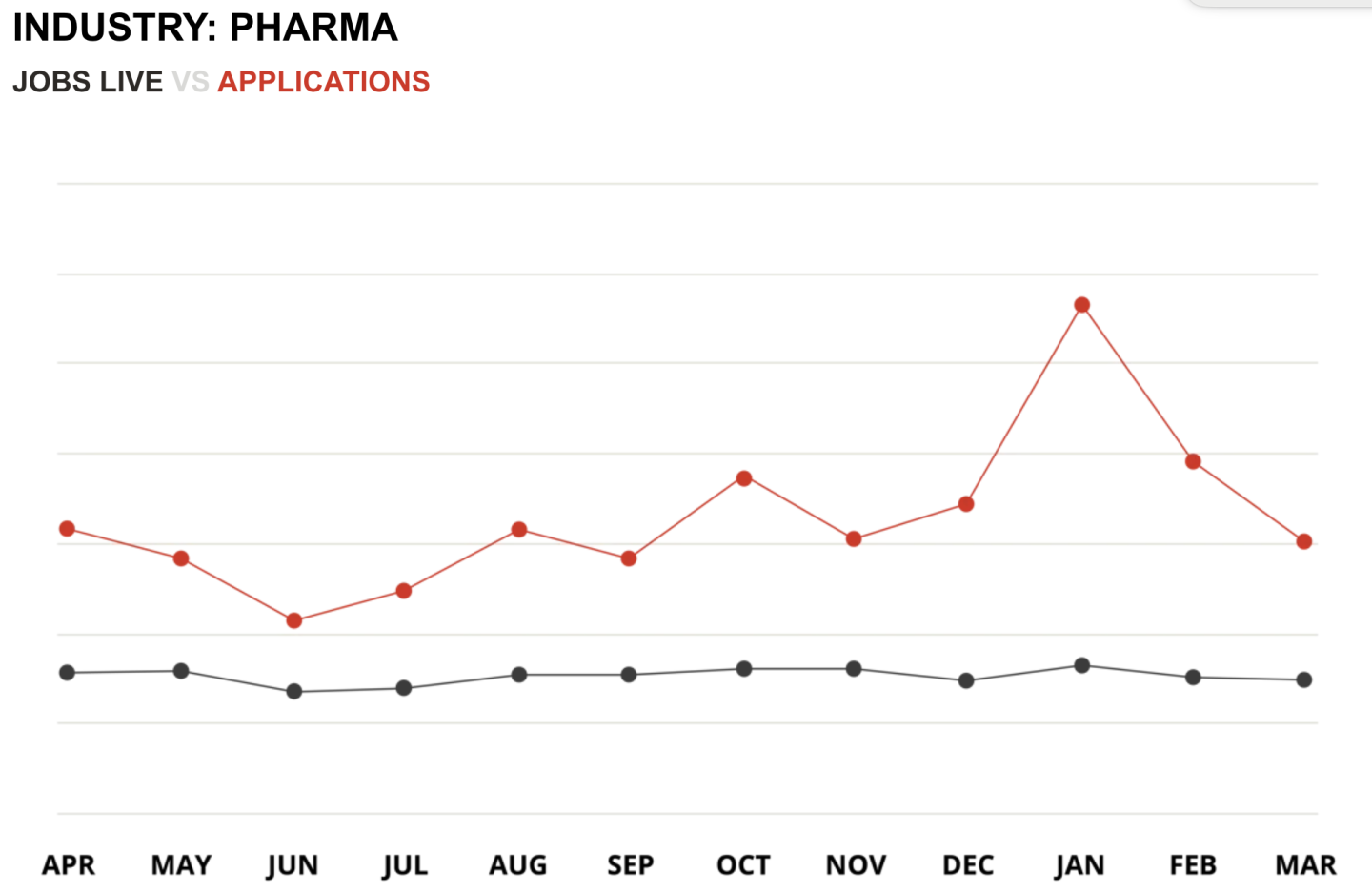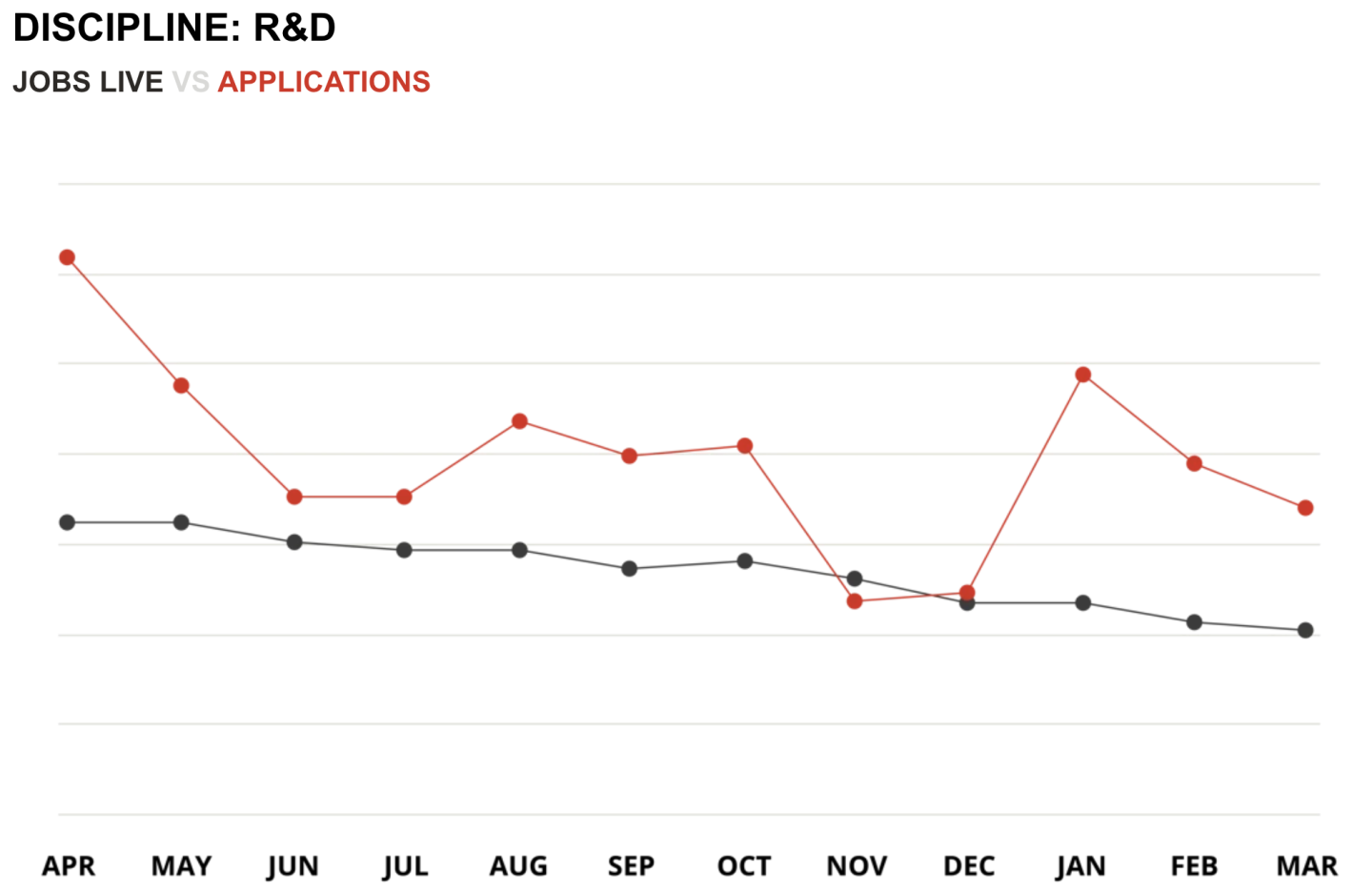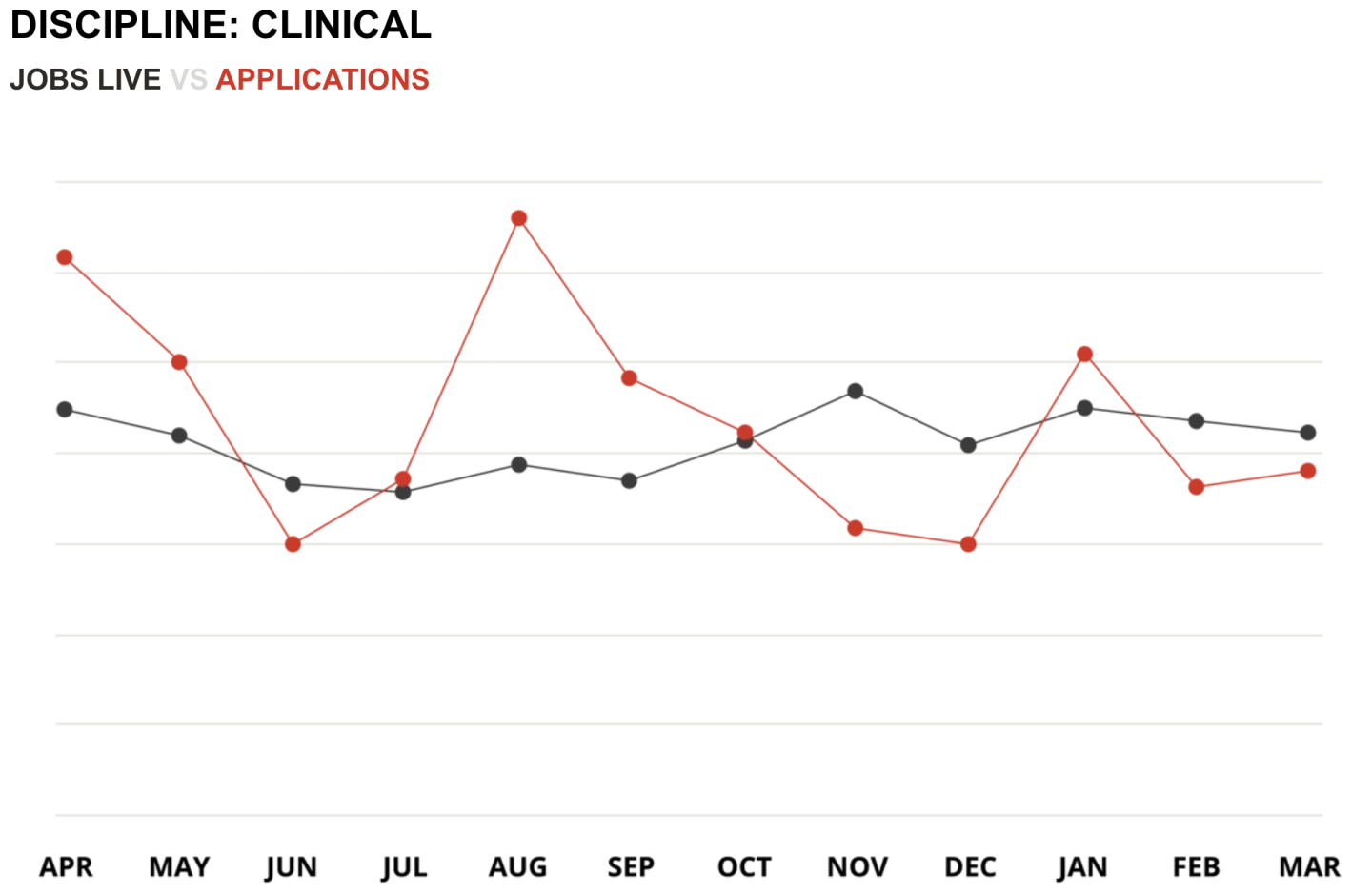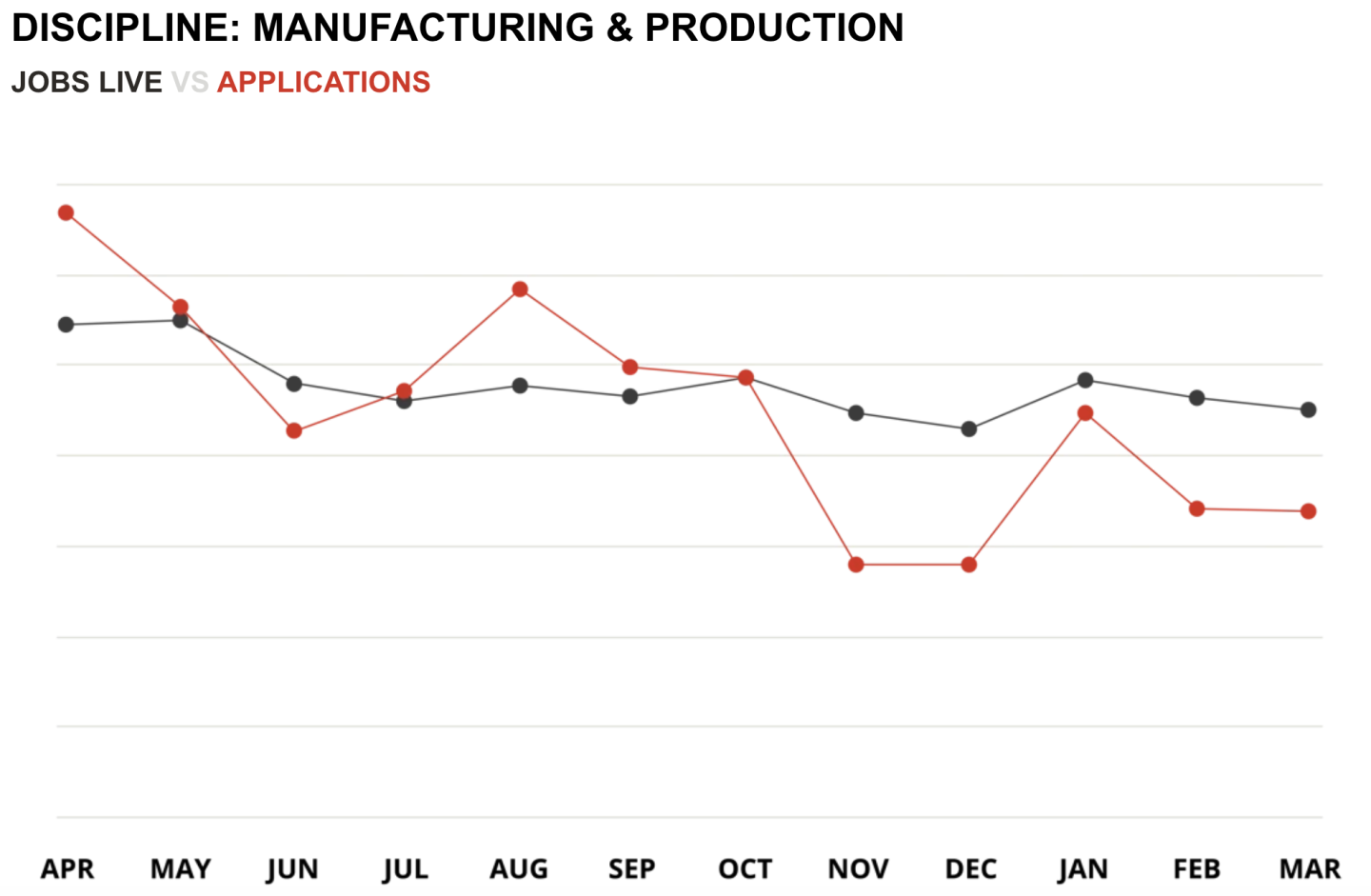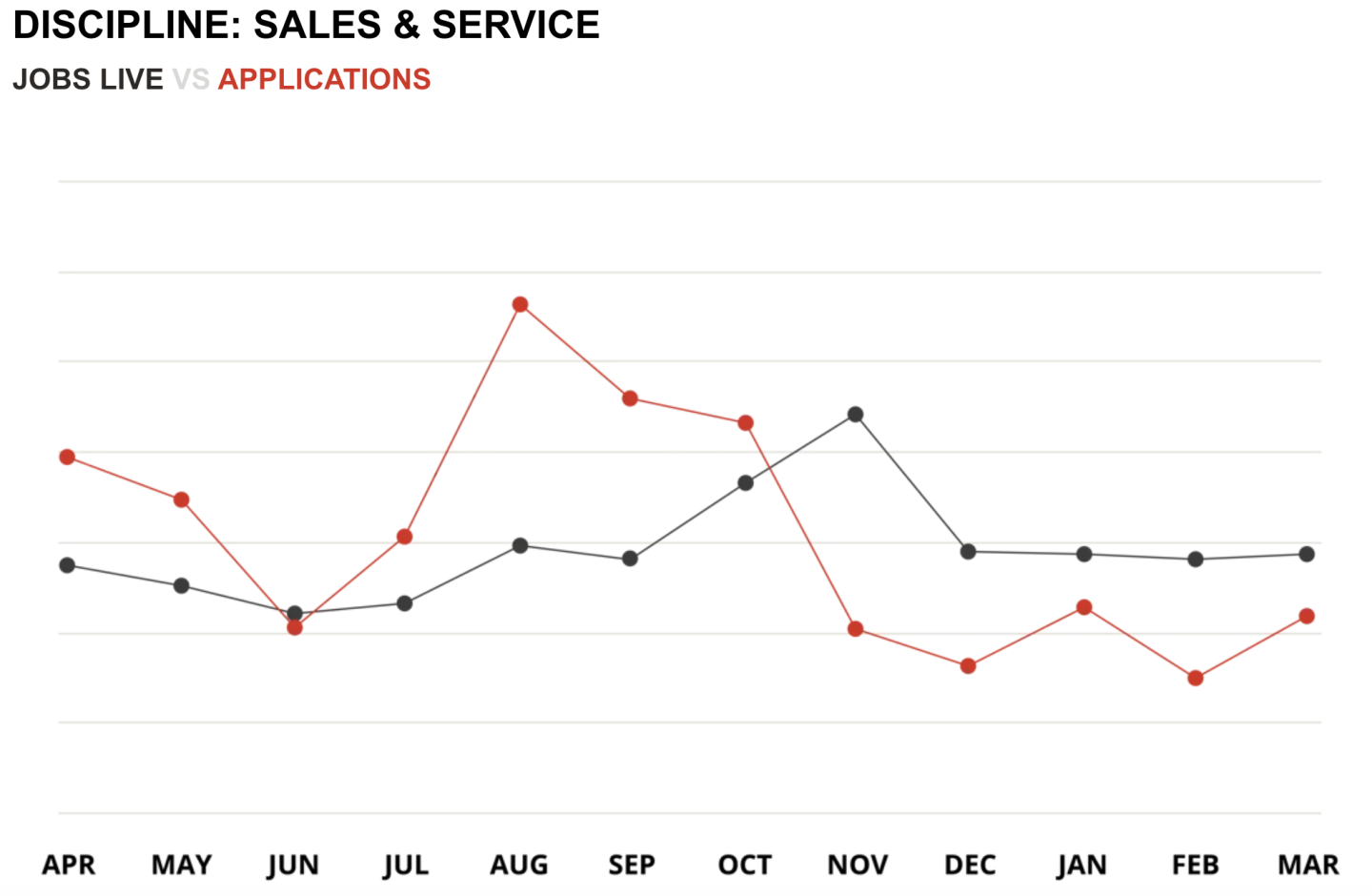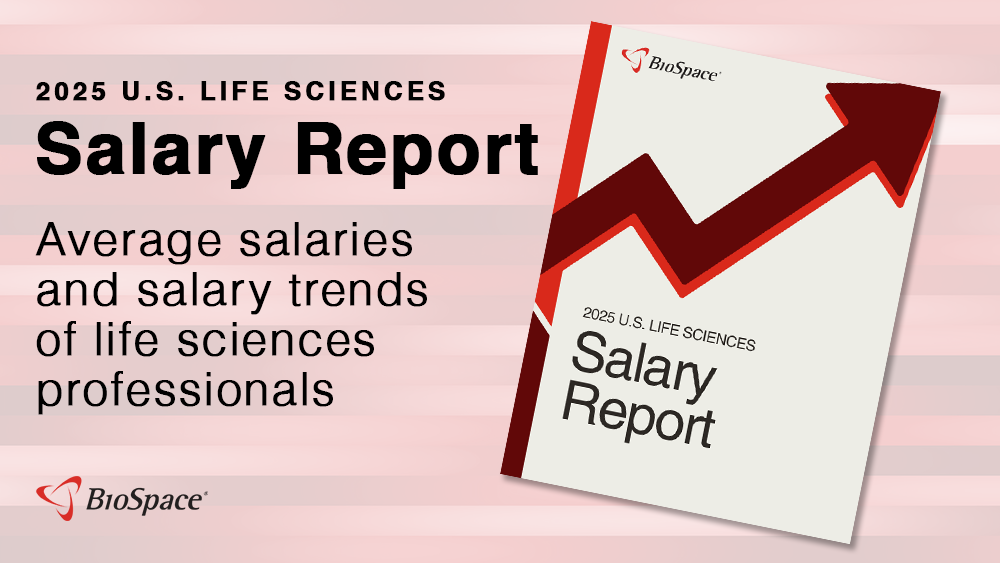The job response rate has risen year over year, according to BioSpace data, indicating competition for roles posted on our website has increased.
Competition for Jobs Remains High
The job response rate—the percentage of people applying to job postings after viewing them—has risen year over year, according to BioSpace data, indicating competition for roles posted on our website has increased. The rate was 18.3% for the first quarter of 2024, up from 15.8% for the first quarter of 2023. It peaked at 20.1% in January.
During the first quarter, the science R&D discipline had the highest number of applications, followed by the clinical discipline. That was also the case for the fourth quarter of 2023.
Also noteworthy: The average number of job postings live on BioSpace declined from the fourth quarter to the first quarter, dipping 3.2%. This is notable for two reasons:
- The first three months of the year are typically the busiest season for hiring, with employers posting significantly more new jobs from January to March than from October to December.
- Layoffs in the biopharma industry continue, with the latest rounds affecting employees at companies including Thermo Fisher Scientific, Boehringer Ingelheim and Sanofi.
The Job Search Landscape
If you’re looking for your next role, you’re not alone. Most life science professionals (72%) are casually or actively job hunting, according to the BioSpace 2024 employment outlook report. Just 5% aren’t looking for or considering new opportunities.
If salary considerations are a top priority for you, changing employers can have financial benefits, according to the BioSpace 2024 salary report. Of survey respondents who changed employers and had an increase, 20% reported a raise of more than 25%. Compare that to merit-based raises, where only 1.5% of respondents had an increase of 25%, while most (67%) reported an increase between 2% and 5%.
Also noteworthy: While biopharma industry salaries are rising, the BioSpace salary report found that the 2% average salary growth rate reported since last year’s survey was the lowest year-over-year increase in the past five years.

